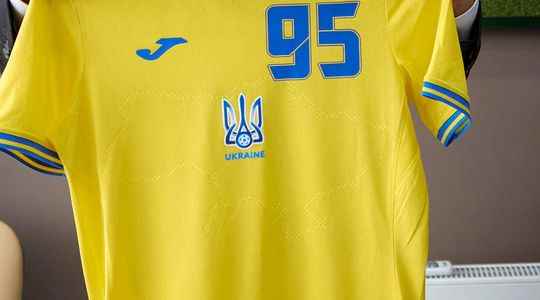Everyone knows that football, the most popular sport on the planet, can sometimes be used to convey political messages. Latest example: Ukraine, which reiterated to its Russian neighbor its refusal to consider Crimea as annexed, since the Russian coup seven years ago. Thanks to a simple but very symbolic jersey. Questioned by Moscow, UEFA imposed to modify it. Only in part.
- The Facts: The Jersey of Discord
Ukraine presented its outfit for Euro 2020 on Sunday, postponed to this summer due to the Covid-19 pandemic. In appearance, this one is relatively classic. There appear the logo of the federation and the traditional yellow color which characterizes the team on a continental scale. But there is something else: a map, drawn in the background, which represents the limits of the country as it officially recognizes them. However, these borders also include Crimea, annexed by Russia in 2014, as well as eastern territories, controlled by pro-Russian separatists.
Also included are the slogans “Glory to Ukraine! Glory to the Heroes!”, formulas taken from a patriotic song and became a rallying cry during the popular uprising of Maidan, in 2014, which had ousted a president supported by the Kremlin. , Viktor Yanukovych.
UEFA, which organizes the tournament, first told AFP on Monday that these outfits of the Ukrainian selection had been approved “in accordance with the relevant regulations”. The latter states that no equipment should “undermine common decency or convey political, religious or racially-related messages.”
- Why It Matters: Angry Russia
The message did not sit well with Russia. Moscow announced on Tuesday evening that it had sent a letter to UEFA to denounce this new jersey of the Ukrainian selection for the Euro football. “Football is a sport that should always stay out of politics,” said the Russian Football Federation (RFS) press service, quoted by Russian news agencies.
Besides the case of Crimea and the controlled territories, Moscow associates the slogans with nationalist groups of the Second World War who fought the Soviets. “By approving such an outfit, UEFA is setting a precedent, because in a next big tournament, we could see other countries trying to use their equipment for political purposes,” said the Russian federation. at dawn the competition, where the two selections can meet at the earliest in the quarter-finals. Because Ukraine will be in group C and Russia in group B.
For his part, Ukrainian President Volodymyr Zelensky praised the outfit, posting on Tuesday evening on instagram a photo where he poses with the new jersey. “The new jersey of the Ukrainian football team is indeed like no other. It may shock. It has several important symbols that unite Ukrainians,” he wrote on the social network, owned by Facebook.
- The outcome: imposed changes
Challenged by Russian protests, UEFA finally imposed a modification of the Ukraine jersey on Thursday, on the eve of the opening of the tournament, judging in the end “political” the mention “Glory to our heroes”. “After further analysis”, this slogan appearing “inside the collar” of the Ukrainian tunic is “clearly of a political nature” and “must therefore be removed (…) in view of the competitive matches of the UEFA,” the body told AFP.
Moscow declared itself satisfied with this decision. “Be sporting heroes and you will have glory, it is thus and not with nationalist slogans that you will honor the fatherland”, estimated to the address of Ukraine, the spokesperson of the Russian diplomacy, Maria Zakharova, reacting on Telegram. UEFA, on the other hand, validated the map of Ukraine appearing on the jersey, recalling that it corresponded to the internationally recognized borders of the country. She also rejected the Russian protest targeting the slogan “Glory to Ukraine”, approved by UEFA since 2018 and which “can be considered a generic and apolitical phrase”, if analyzed in isolation.
- The context: tensions still present between the two nations
This geopolitical bickering on a football background finds its source in the recent tensions between the two countries. At the beginning of April, Russian maneuvers on the Ukrainian border and in Crimea alerted Europe, which feared an attack on Kiev. Before, finally, that Russia begins its withdrawal a few weeks later.
More broadly, the conflict between the two countries has persisted since the 2014 Donbass war, never definitively extinguished despite German-French mediation in 2015. Until today, more than 13,000 people have been killed in clashes.
